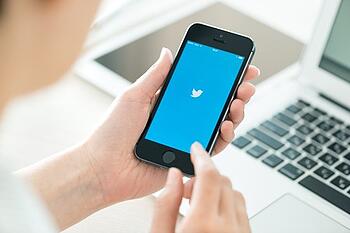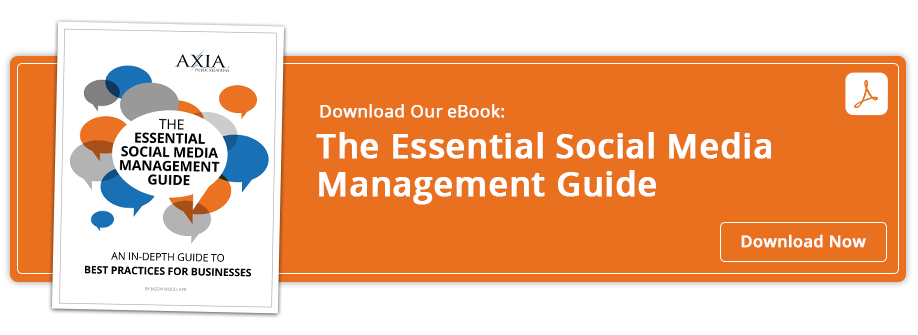 Create mutually beneficial relationships using social media
Create mutually beneficial relationships using social media
Already this month, our team has blogged about social media and its role within an overall marketing communications program. To that end, comments have come in inquiring about how businesses can establish stronger ties with the local media through social media.
If you use Twitter, LinkedIn or Facebook regularly, you immediately gain access to a large and varied population of journalists and news media outlets. Even a quick review of local media websites highlights that most news professionals maintain social media presences – with Twitter handles (@name) stashed within team bios, beneath photos or in news blog posts. Of course, if you aren’t yet comfortable with Twitter as a social media platform, you’ll first want to brush up on basic functionality and terms including “retweet” (RT), “hashtag” (#), “favorite,” “newsfeed,” “tweet,” etc. before proceeding.
In our experience, if businesses or individuals truly want to establish relationships using Twitter, they’ll want to consider these best practice tips:
1. Target a list of the top 10 journalists you want to know about you. It doesn’t make sense to build a list of 100+ media representatives and believe that you can effectively establish strong ties with each of them. It just isn’t feasible. However, you can manage a small, targeted list of influential press and editors, and you’ll be significantly more successful in establishing ties and creating awareness if you do it with genuine sincerity and focus.
To begin, research the media outlets you feel would be most interested in what you do, locate the correct editor or reporter, then find out if he or she is active on social media. Most reporters tend to be active on Twitter as it allows short content/discussions, non-committal relationships and relative privacy compared to others. Once you’ve created your list, determine the appropriate Twitter handles (@name) and “follow” them. It also helps to follow their overarching news networks/associations, as well. Of course, if you have limited time to spend researching, a useful pay-for tool called MuckRack is available, which connects and supports marketing communications professionals and journalists.
2. Introduce yourself. Aside from actually locating and following your Top 10 list, you’ll want to begin to watch the type of content those reporters and editors tweet and follow the beats they follow, as well as the stories they generate. Based on this information, you’ll be able to determine if they may be interested in your business and, if so, you can introduce yourself in 140 characters or less. (i.e. “@TheJasonMudd Just wanted to say hi. Really enjoyed your 2015 PR tips piece. Hope to connect soon.”) While you shouldn’t expect an immediate response, hopefully, the press contact will, at a minimum, follow you back – and that is a positive sign!
3. Retweet or share their content. To further a media relationship, it’s a good idea to follow content and, when you see relevant content, share it (retweet) with your Twitter following. It’s a nice gesture showing interest in the reporter’s work, and it helps your followers, too.
4. Tweet your own useful content. If you are a local business with advice or a news tip you believe would help others in the community, consider sharing it in a tweet not only in your own newsfeed, but to your top 10 media contacts, as well. Refrain from spamming the press, however, as they will immediately unfollow you or, in some cases, may “block” you, which means no matter what you put on Twitter or send to them, they’ll never see it. Useful content often results in your becoming a source and, by helping a reporter do his or her job, you ultimately help your business, as well.
5. Support your media contacts. These days, when reporters are short on sources or when media outlets are short on photos, videos, on-scene witnesses or experts, they immediately reach out to the “Twitterverse.” For example, if a major weather event occurs in your town, you could easily become an on-scene citizen journalist simply by tweeting your photos or live videos with an appropriate hashtag for both the news outlet/station or weather event (#NECN #BostonBlizzard2015), which the press can easily scan. In these instances, the media network will likely reach out to not only verify your content, but to request permission to use it.
In the end, relationships are not simply about what media can do for you, but what you can do for the media, too. It’s a two-way street – as are all relationships – so to build a solid one, you’ll want to become a useful support.
6. Share sincere appreciation. A seemingly lost art is that of appreciation. If a reporter/news outlet used your photo or video, covered an idea you pitched or used you or a professional contact as a source, tweet a simple “thank you.” Always remember that you are striving to develop a mutually beneficial relationship using social media.
For more tips and techniques on how to use social media for news media engagement, download Axia Public Relations’ Essential Social Media Management Guide and visit axiapr.com.
Wendy Bulawa Agudelo has more than 15 years of experience in technology, business, consumer and non-profit public relations. In addition to serving on the Massachusetts Down Syndrome Congress PR Task Force, Wendy enjoys cooking and rooting for her favorite New England sports teams.
Featured image credit: 123rf.com
Topics: public relations, shared media


Comment on This Article